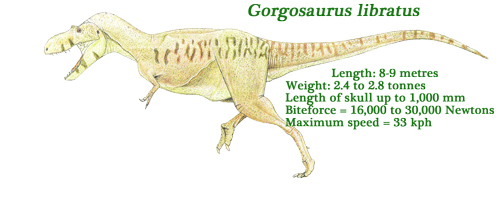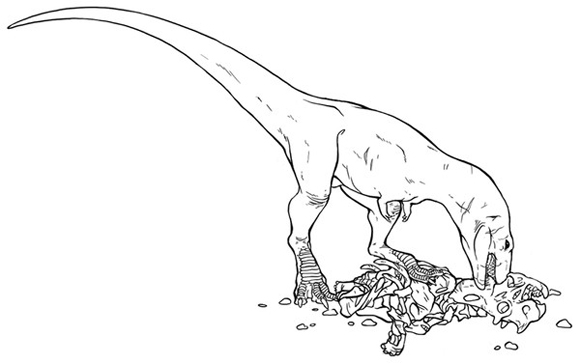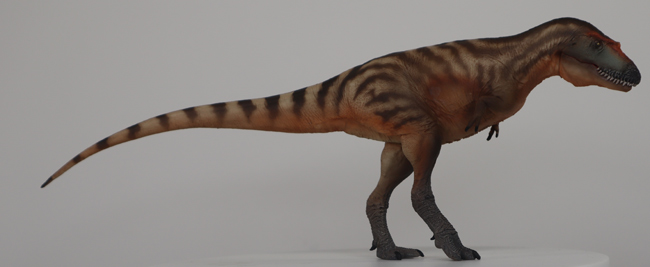Defining Allometric Growth Some Helpful Information
Defining Allometric Growth
Everything Dinosaur received an email from a dinosaur model collector the other day enquiring about the concept of allometric growth. She had read in one of our blog articles about the growth rates of tyrannosaurids and wanted to enquire how we define allometric growth and what this might mean when looking at the lives of theropods.
Put simply, allometric growth occurs when different parts of an organism grow and develop at different rates. The appearance of an organism undergoing allometric growth changes radically as the organism grows and matures.
Gorgosaurus libratus – One of the Most Extensively Studied Tyrannosaurs

Picture credit: Everything Dinosaur
Allometric Growth and Gorgosaurus libratus
The Late Cretaceous tyrannosaurid Gorgosaurus (G. libratus) provides palaeontologists with the most extensive fossil record of any member of the Tyrannosauridae. It is known from numerous fossil specimens, including adults and juveniles, most of these fossils having come from the famous Dinosaur Park Formation of southern Alberta (Canada).
Leg bone proportions changed as these predators grew and matured. For example, the femur (thigh bone), in adults and sub-adults was slightly longer than or equal in length to the lower leg bones (tibia and fibula). In the very largest specimens, the femur is more than a metre in length. In many juveniles, it is the tibia that is longer than the femur. The body proportions of these dinosaurs changed as they grew, so they are demonstrating allometric growth.
A Juvenile Gorgosaurus Feeding on the Carcase of a Centrosaurus

Picture credit: Marie-Hélène Trudel-Aubry/PeerJ
As the body proportions of Gorgosaurus changed as the animal grew and matured, this has implications for its behaviour. For instance, young immature animals were very probably much faster runners than adult animals, they may have specialised in hunting and catching much smaller prey. If these dinosaurs were pack hunters, then juveniles may have had a specific role in hunting, perhaps pursuing prey and driving it towards the adult members of the pack.
A Model of an Adult Gorgosaurus

Picture credit: Everything Dinosaur
The image (above) shows a model of an adult Gorgosaurus from the PNSO prehistoric animal model range.
To view this range: PNSO Age of Dinosaurs Range.
Isometric Growth
Organisms that have parts that grow at the same rate and therefore retain a consistent body plan as they grow are deemed to demonstrate isometric growth. Many types of amphibian demonstrate isometric growth. Once a frog has metamorphosised from the tadpole stage, its body proportions hardly change as it grows.
Visit the Everything Dinosaur website: Everything Dinosaur.

